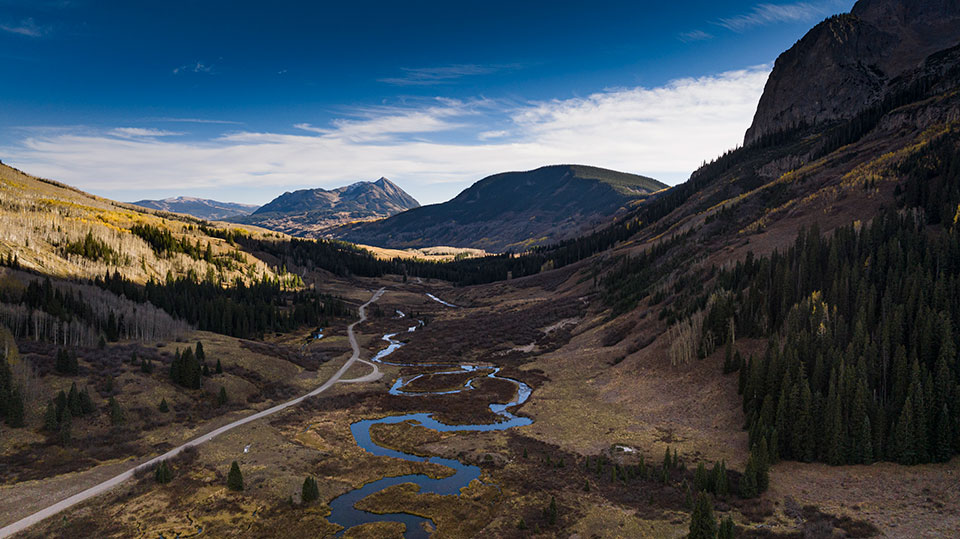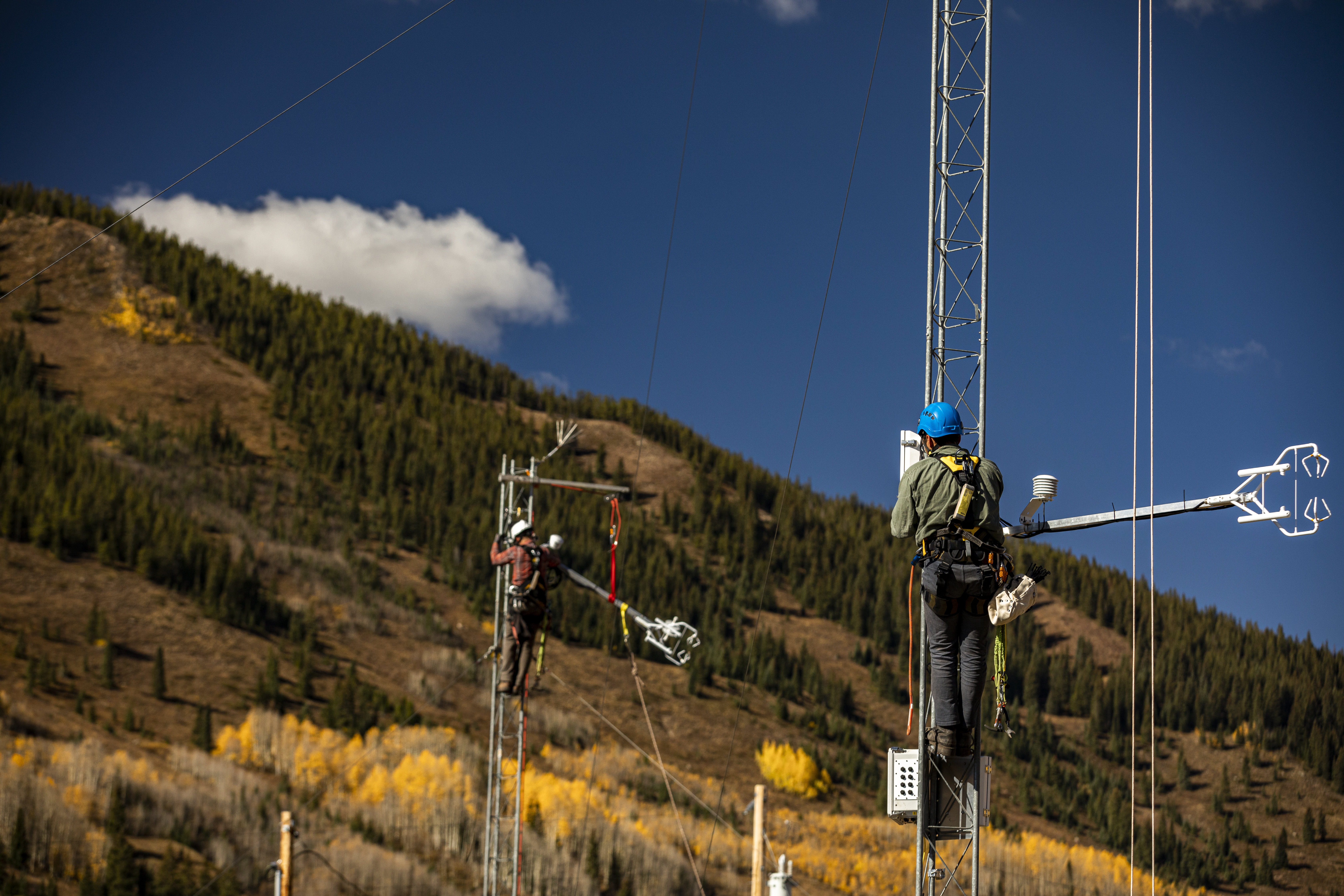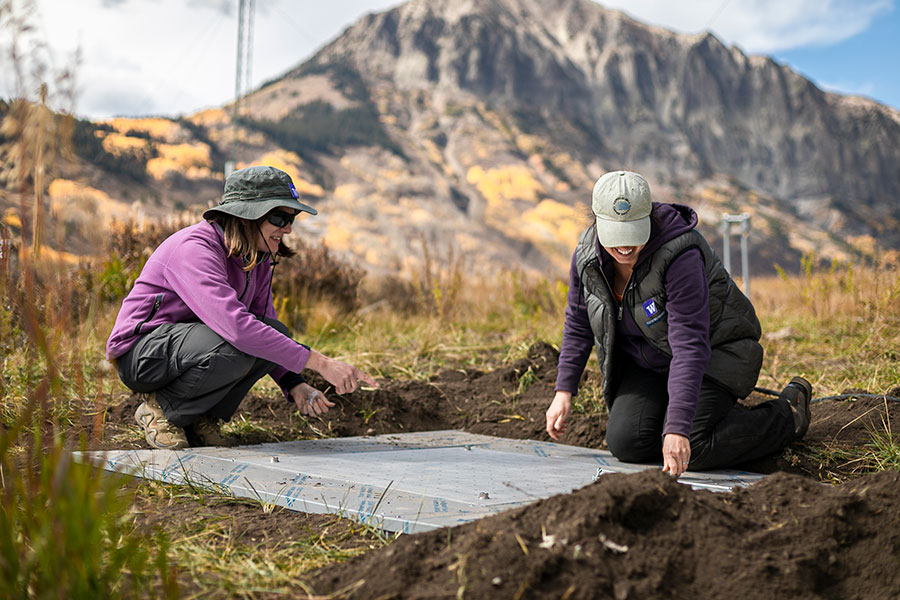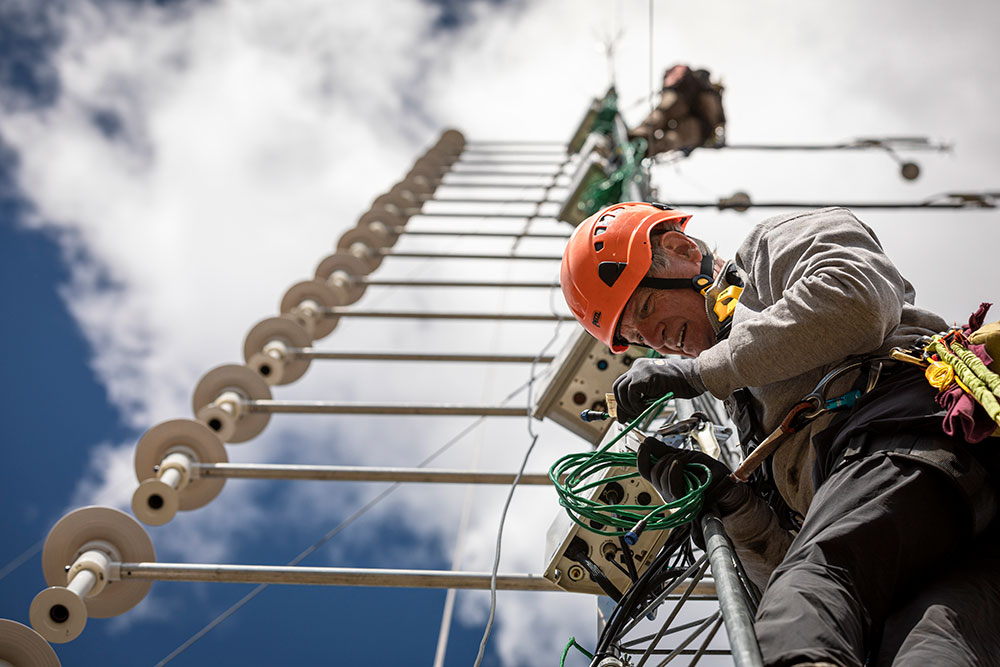Snow sleuths
Researchers around the world join forces to investigate missing snow, improve water resources modeling
By: Brooke Fisher
Photos: Mark Stone/University of Washington
Top image: This winter, Professor Jessica Lundquist is co-leading the Sublimation of Snow (SOS) project in Colorado's Rocky Mountains.
A single snowflake hadn’t yet fallen when a team of civil and environmental engineering snow researchers descended on a small town in Colorado’s Rocky Mountains this past fall. But that was intentional — they were preparing for the coming winter’s mission to answer a longstanding research question: What happens to snow after it falls?
The researchers are investigating a phenomenon known as sublimation, which is the transition of snow directly from a solid state into water vapor, skipping the liquid stage. This is similar to the behavior of dry ice, in which frozen carbon dioxide vaporizes. Currently the largest source of uncertainty in snow modeling, sublimation has the potential to be an important insight for water resources management, especially estimating future water reserves.
“Sublimation is an extremely hard thing to measure. Lots of people have tried and come to different conclusions,” says Professor Jessica Lundquist, who is co-leading the Sublimation of Snow (SOS) project. “This will be the first time it’s been looked at with this level of detail in a mountain region.”
In one of the largest efforts to date — the combination of three field campaigns, plus additional research organizations — the UW team is collaborating with researchers around the country to leverage expertise and equipment. In early October, Lundquist and graduate students Danny Hogan and Eli Schwat arrived at the Rocky Mountain Biological Laboratory (RMBL), located north of Crested Butte, Colorado. They deployed equipment and planned for data collection, which the graduate students will conduct on-site this winter.
“It takes this kind of effort to solve something this difficult. It’s a question of scale — we need both tiny and big measurements,” Lundquist explains. “It’s exciting when you see so many different people and agencies come together and say ‘We’ll work together as a team.’”
Funded by a National Science Foundation grant, the SOS project is led in collaboration with alumna Julie Vano (CEE Ph.D. ’13), research director for Aspen Global Change Institute. In addition to SOS, participating field campaigns are the National Oceanic and Atmospheric Administration’s SPLASH project and the U.S. Department of Energy’s SAIL project. Also involved are the National Center for Atmospheric Research’s Earth Observing Laboratory, the Swiss Federal Institute for Forest, Snow and Landscape Research (SLF), and the Swiss Federal Institute of Technology Lausanne (EPFL).
The mystery of the missing snow

The Colorado River watershed is an ideal site to study sublimation, as the phenomenon occurs more often in dry climates. In recent years, there have also been unexplainable decreases in the river’s flow, which people in seven states depend upon for drinking water. In 2021, the Colorado River snowpack was estimated at 80% of average, but streamflows ended up being only 30% of average. The researchers speculate that the discrepancy may in part be explained by sublimation.
“Forty million people depend on the Colorado River, and snow is the biggest input in the water resource equation,” Hogan says. “We don’t really know how much water is being lost from sublimation definitively.”
Current models used to predict sublimation rely on a fundamental theory, developed in flat cornfields in Kansas in the 1950s, that has proven to be inaccurate in more complex terrain, such as mountainous regions. Models based on this theory vary widely in terms of how much snow is predicted to sublimate, ranging from 10-90%.
“A simple way to explain why the theory in the prairie doesn’t apply in complex terrain is to imagine a river flow — it behaves well over smooth ground, but if you introduce bumps to the river bed, the flow becomes complicated,” Schwat says.
To improve future models, the researchers are working to better understand the precise combination of conditions that lead to sublimation, which tends to occur during low temperatures, low humidity and when both strong sunlight and wind are present. Since sublimation impacts snow on the surface and likely the snowflakes blowing above, the researchers will be paying close attention to the top layer of snow. They’ll also be investigating the characteristics of the turbulent air motions above — which can fluctuate widely depending on wind and other conditions.
“Studies show that when snowflakes are picked up by the wind and blown around, they may sublimate, so blowing snow is not necessarily just deposited elsewhere,” Schwat explains.



Left: The NCAR’s Integrated Surface Flux System team sets up sonic anemometers on two separate towers, which will be used to measure turbulent air motions. Top right: Project leaders, Professor Jessica Lundquist and alumna Julie Vano (CEE Ph.D. ’13), from left, set-up a snow pillow. Bottom right: A skyward view of a 65-foot tall tower with Steve Oncley, (MS Atmospheric Sciences ‘83), who leads NCAR’s Earth Observing Laboratory, in the foreground. Oncley is connecting sensors to data loggers.
In a mountain valley located about a mile from RMBL, the UW team deployed an array of sensors, including “snow pillows,” which weigh the snow to monitor the amount of water in the snowpack. Four towers, up to 65 feet tall, were installed by collaborators for meteorological measurements, such as wind speed. Other instrumentation includes X-Band Radar, Doppler Lidar and terrestrial laser scanners to measure and track blowing snow.
“Few studies have the unique combination of instruments that we have here, both in terms of variety and sheer quantity,” Hogan says. “We’ll be able to see how well the theoretical equations and relationships play out when we have measurements at so many levels.”
Winter observations
In January, the graduate students will return to Colorado to oversee field observations through mid-March. They will stay on-site in cabins, as RMBL is only accessible via cross-country skiing during winter months.
“It’s a unique spot where we are staying, about four miles from the town of Crested Butte, so it’s ski in and ski out, which makes for more of an adventure feel to the field work,” Hogan says.
In addition to maintaining the field equipment, the graduate students will gather measurements during various weather conditions. In late January, the students will be joined by Lundquist, Vano and collaborators for two weeks of intensive observations. In addition to better understanding the process that leads to sublimation, the researchers hope to discern what types of measurements and instrumentation can best predict snow sublimation in a mountain valley.
To highlight the importance of the project to people whose water comes from mountain regions, as well as the larger science community, Vano and her team at the Aspen Global Change Institute are already working on outreach. Through the creation of videos and other educational materials, they hope to bring more visibility to the often overlooked topic.
“It’s in this intersecting space between hydrology and atmospheric sciences,” Vano says. “Hopefully through this work there will be a greater awareness of what snow sublimation is and the value and excitement of doing this type of research.”
Learn more
Follow-along as the researchers track preliminary data during the winter field campaign.